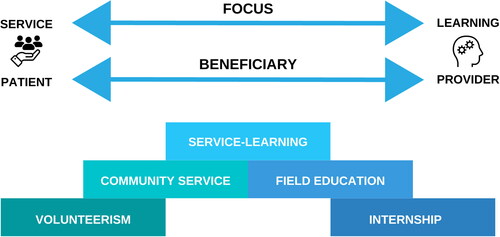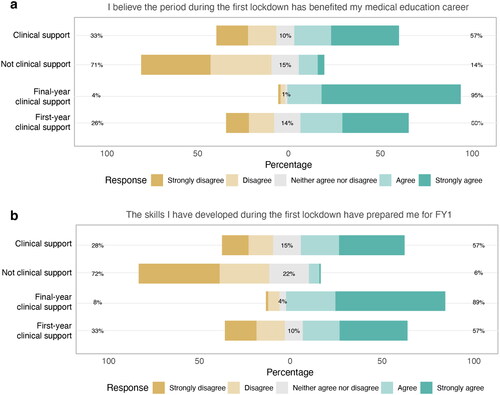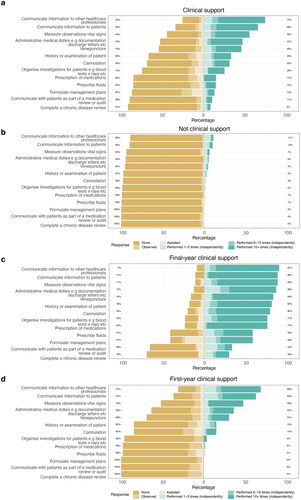Figures & data
Figure 1. The spectrum of service and learning, adapted from Furco Furco (Citation1996).

Figure 2. (A) Duration of clinical support in weeks; (B) Hours spent providing clinical support per week; Clinical support role performed for (C) all year groups and (D) divided by year group.

Figure 3. Opinions on the benefit of the first lockdown period on medical education and preparedness for FY1 across all students who provided clinical support, students who did not, final-year students who provided clinical support and first-year who provided clinical support for (A) perceived benefit for medical education career, and (B) perceived preparedness for FY1.

Table 1. Multiple regression analysis of predictors of benefit for students’ medical education or career; preparedness for FY1; and aggregate clinical skills performed.
Figure 4. Number of times clinical skills were performed during the first lockdown for: (A) students who provided clinical support (all year groups); (B) students who did not (all year groups); (C) Final year who provided clinical support; D) First year who provided clinical support. Data is presented as the percentage of students who performed each skill on a scale of: None, Observed, Assisted, Performed one to five times (independently), Performed six to ten times (independently), Performed 10+ times (independently).

Table 2. Themes identified from qualitative analysis relating to how clinical support influenced learning.
Supplemental Material
Download JPEG Image (207.9 KB)Supplemental Material
Download MS Word (21 KB)Supplemental Material
Download MS Word (63.4 KB)Data availability statement
The data that support the findings of this study are available from the corresponding author upon reasonable request.
